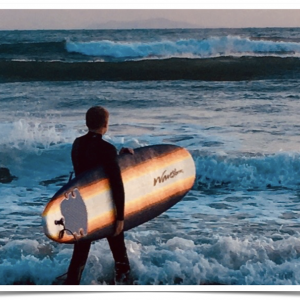This book, otherwise known as On the Origin of Species by Means of Natural Selectionwas written by Charles Darwin following his transcontinental Beagle expedition to further his geological and biological research. On this expedition, he visited various islands including the Galapagos Islands, Tahiti, and Australia. On these trips, Darwin analyzed his findings and wrote On the Origin of Species to publishhis new research regarding evolution and natural selection. This book essentially changed the face of science in the nineteenth century, as evolution went against the popular, powerful catholic religion of the time. However, the new emphasis on science being absolute aided in Darwin’s ability to put out his findings and change the way that humans see themselves in relation to the rest of nature. After this, it was apparent that humans were not the center of the environment in which they live. This is similar to the paradigm shift seen when Galileo...
moreEngaging English (F19 ENGL 202, Purdue) Dashboard
Description
 This class will teach you how to surf (the Internet) and about the various ways that English studies have been transformed over the last few decades. Starting with some basic close-reading and analysis skills, we will then explore how those skills have been increasingly applied to new areas of inquiry (tv, film, culture, critical theory, and politics). We will also employ new digital tools that change the way we approach our subjects of inquiry, including Web annotation, timeline-building, gallery-building and GIS mapping. As we proceed, we will consider the nature of English studies: What is an English department and how does it relate to the rest of the university? What can you do with an English degree? Why is it necessary to fight for English in an increasingly STEM-oriented world?
This class will teach you how to surf (the Internet) and about the various ways that English studies have been transformed over the last few decades. Starting with some basic close-reading and analysis skills, we will then explore how those skills have been increasingly applied to new areas of inquiry (tv, film, culture, critical theory, and politics). We will also employ new digital tools that change the way we approach our subjects of inquiry, including Web annotation, timeline-building, gallery-building and GIS mapping. As we proceed, we will consider the nature of English studies: What is an English department and how does it relate to the rest of the university? What can you do with an English degree? Why is it necessary to fight for English in an increasingly STEM-oriented world?
Galleries, Timelines, and Maps
 This gallery is part of ENGL 202's build assignment. Research some aspect of Romanticism and then contribute what you have learned to our shared class resource. As the assignment states, "Add one timeline element, one map element and one gallery image about the Romantic period to our collective resources in COVE Editions. Provide sufficient detail to explain the historical or cultural detail that you are presenting. Interlink the three objects. I have provided one image as an example of what is required.
This gallery is part of ENGL 202's build assignment. Research some aspect of Romanticism and then contribute what you have learned to our shared class resource. As the assignment states, "Add one timeline element, one map element and one gallery image about the Romantic period to our collective resources in COVE Editions. Provide sufficient detail to explain the historical or cultural detail that you are presenting. Interlink the three objects. I have provided one image as an example of what is required.
 This map is part of ENGL 202's build assignment. Research some aspect of Romanticism and then contribute what you have learned to our shared class resource. As the assignment states, "Add one timeline element, one map element and one gallery image about the Romantic period to our collective resources in COVE Editions. Provide sufficient detail to explain the historical or cultural detail that you are presenting. Interlink the three objects. A few timeline elements have already been added (drawing from the COVE database).
This map is part of ENGL 202's build assignment. Research some aspect of Romanticism and then contribute what you have learned to our shared class resource. As the assignment states, "Add one timeline element, one map element and one gallery image about the Romantic period to our collective resources in COVE Editions. Provide sufficient detail to explain the historical or cultural detail that you are presenting. Interlink the three objects. A few timeline elements have already been added (drawing from the COVE database).
 This timeline is part of ENGL 202's build assignment. Research some aspect of Romanticism and then contribute what you have learned to our shared class resource. As the assignment states, "Add one timeline element, one map element and one gallery image about the Romantic period to our collective resources in COVE Editions. Provide sufficient detail to explain the historical or cultural detail that you are presenting. Interlink the three objects. A few timeline elements have already been added (borrowing from BRANCH).
This timeline is part of ENGL 202's build assignment. Research some aspect of Romanticism and then contribute what you have learned to our shared class resource. As the assignment states, "Add one timeline element, one map element and one gallery image about the Romantic period to our collective resources in COVE Editions. Provide sufficient detail to explain the historical or cultural detail that you are presenting. Interlink the three objects. A few timeline elements have already been added (borrowing from BRANCH).
Individual Entries
West Minster Abbey is a royal Church in London. This place has seen many royal weddings, coronations, and history taking place over the years. West Minster Abbey has more than 3,300 people buried and commemorated. This place has held every coronation since 1066, including Queen Victoria's on June 28, 1838. West Minster Abbey holds many historical events in Great Britain and will continue to for years to come.
